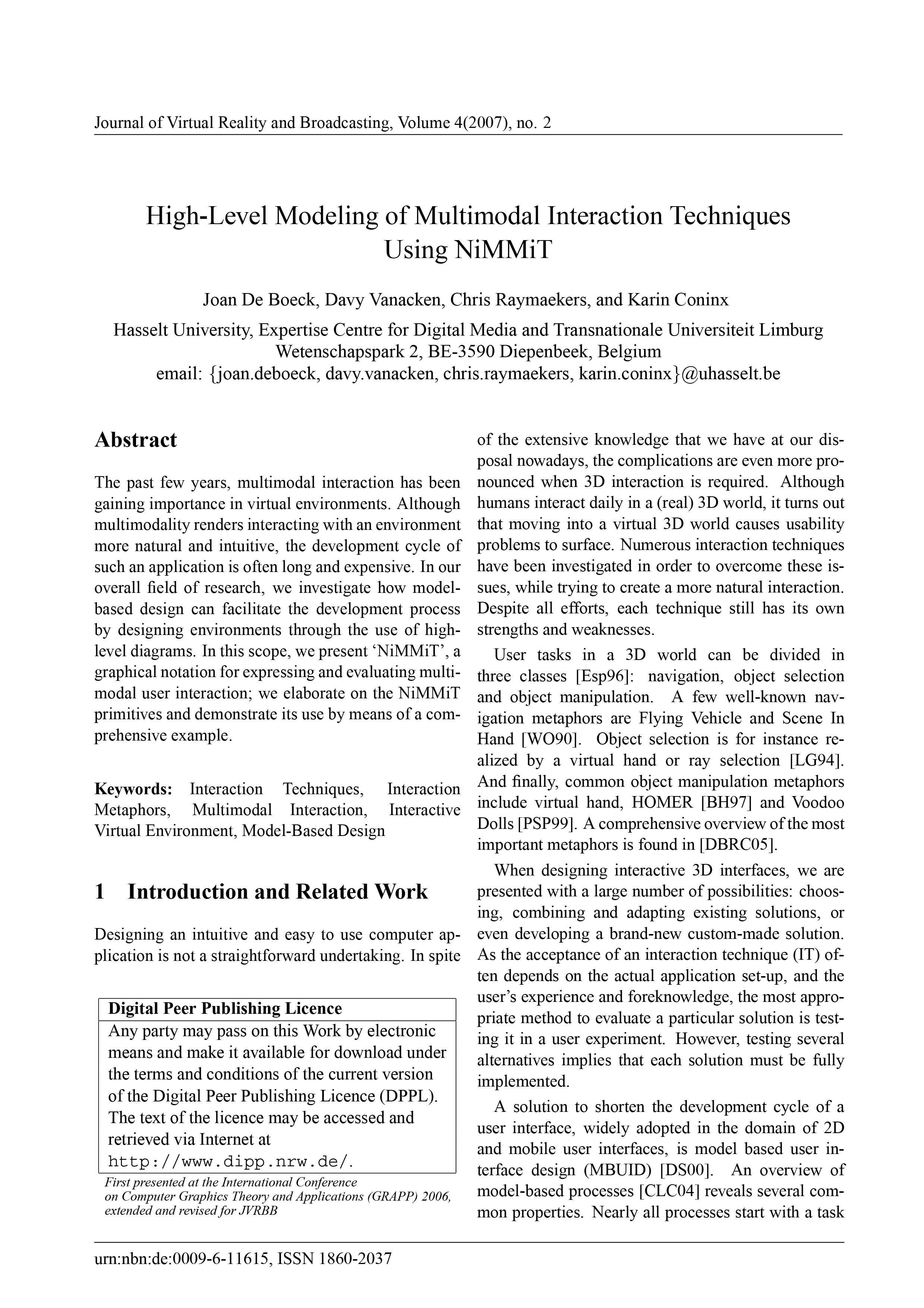High-Level Modeling of Multimodal Interaction Techniques Using NiMMiT
DOI:
https://doi.org/10.20385/1860-2037/4.2007.2Keywords:
Interaction Metaphors, Interaction Techniques, Interactive Virtual Environment, Model-Based Design, Multimodal InteractionAbstract
The past few years, multimodal interaction has been gaining importance in virtual environments. Although multimodality renders interacting with an environment more natural and intuitive, the development cycle of such an application is often long and expensive. In our overall field of research, we investigate how modelbased design can facilitate the development process by designing environments through the use of highlevel diagrams. In this scope, we present ‘NiMMiT’, a graphical notation for expressing and evaluating multimodal user interaction; we elaborate on the NiMMiT primitives and demonstrate its use by means of a comprehensive example.
Published
2007-08-28
Issue
Section
GRAPP 2006





